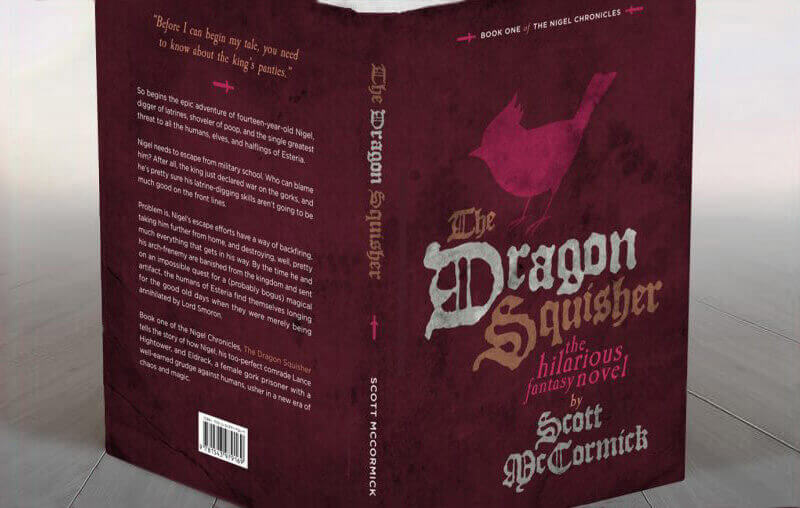
The 250 words you’ll choose to place on your book’s back cover might just be the most important in your entire book project.
Think of your favorite books in your personal library. Aside from the titles and authors, what usually comes to your mind? Your favorite passages? All those beautiful covers? The most memorable images provide visual cues about what’s inside the pages, setting the mood, or giving some clues about the story. Some covers tell a story in and of themselves.
So what about the other side of the book? The book’s back cover. Anything?
I’ll wager that nobody remembers what’s on the back cover of their favorite books. And yet I believe this is the most important – and most overlooked – book marketing real estate for self-published authors.
Authors spend a great deal of energy writing the book, of course. Next is choosing a title and helping create an eye-catching cover. But when it comes to the back cover of their printed book, many new authors skimp or are unconcerned with what’s included, and that’s a huge mistake.
The 200–250 words you’ll choose to place on your book’s back cover might just be the most important words in your entire book project.
Think of it this way: Done correctly, the back-cover copy is the primary ad for your book. So how do you create a great back cover? Here are some basic do’s and don’ts.
DO!
- Limit the amount of content. Unless it’s an oversized coffee table book, you’ll have room for 200-250 words on your back cover, maybe less. Put too much content and it will overwhelm your potential buyer. You’ll have to make the font size so small that people will need a magnifying glass to read it.
- Research what other authors in your genre are doing with their back covers. Before writing your own back-cover copy, examine the backs of other books in your genre for examples of what is working for other authors.
- Write a short summary of what your book is about. Again, keep it tight – write only a paragraph or two. If it’s a novel, include the story’s most engaging plot points. For a nonfiction book, create a bullet point list of the book’s main features and consider including that list on the back cover. Use three to five bullet points only (odd numbers are best, marketing research shows), and tell what the book will do for the reader or what the reader will learn from your book.
- Add your picture to the back cover. Have a professional headshot created for you. This should be a clear, close-up photo of your face. Just you. No significant others, kids, or pets.
- Include a brief bio. For nonfiction authors, you should include two or three points to establish that you are an expert with the training and/or experience that qualifies you to write about your topic.
- Include endorsements. These should be short and powerful statements – preferably by someone well-known in your genre (if you’re a novelist) or your field (if you write nonfiction).
DON'T!
- Make yourself the focus of your book’s back cover. Your focus needs to be on your readers and why they should be interested and/or trust in what you have to say. It’s all about tapping into your readers’ need for your book. Unless you make that connection, those potential readers will choose another book, no matter how good your writing and content might be.
- Use clichés. Don’t tell potential readers this book is “a must-read” that “will change your life.” The back-cover copy is not a book review. Make sure the tone is understated. People know you wrote this ad for the book, and if you write about it in superlatives, it makes you look bad – either arrogant or desperate or exaggerating, depending on people’s perception. Write confidently but humbly, stating facts about the book and touting its benefits, not a parade of adverbs and adjectives of self-praise.
- Get just anyone to write an endorsement for you. You have very limited space, so your endorsement ought to be a recognized name in your genre or field. Better to forgo endorsements than to look like you tried — and failed — to find someone important to recommend your book.
- Forget to proofread and grammar check your back-cover copy. These are the most painful goofs and typos! It’s a sure sign to prospective readers that the pages inside the book contain the same kind of careless errors.

While you might not remember the back cover content of the last book you read, it probably played a major part in your buying decision. The words you place on your back cover are crucial to your book’s success. Give your back-cover copy the time and attention required so it can close the sale!

Steven Spatz
Steven Spatz is a writer, marketer, and President Emeritus of BookBaby, the nation’s leading self-publishing service provider. After a successful career with companies including Mattel, Hasbro, and Pinnacle Orchards, Steven joined AVL Digital in 2004 as Chief Marketing Officer, leading the direct-to-consumer marketing teams for music industry-leading brands Disc Makers, Oasis, and CD Baby. The native Oregonian was tapped to lead BookBaby, the company’s new publishing division, in late 2014. BookBaby’s growing book-printing operation is located outside Philadelphia, PA, and employs over 100 book-publishing experts across the United States to meet the printed and eBook needs of thousands of self-publishing authors around the globe. Steven retired as brand President in 2022 and continues to contribute via weekly emails, industry guides, and posts on the BookBaby blog. He’s in the process of relocating full-time to southern France in early 2023. Steven loves to hear from authors, editors, and publishers in the BookBaby community with tales of publishing trials and triumphs. To tell him your story, write to steven@bookbaby.com.
Related Posts
People Judge Your Book By Your Headshot
How To Get Cover Design And Formatting That Fits Your Story
10 Secrets To Successful Book Marketing
The Power Of A Strong Book Cover Blurb
Why Amazon Keywords Matter For Your Book